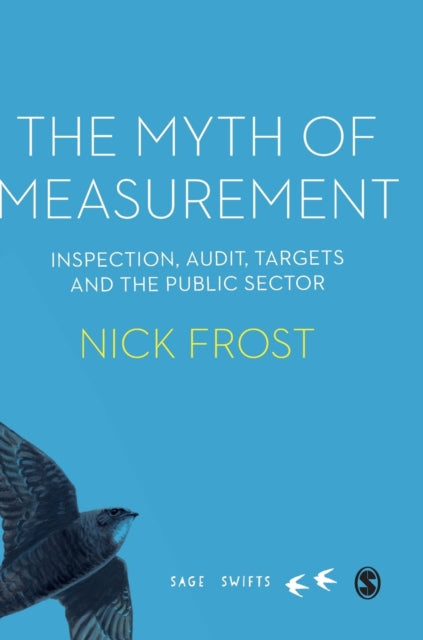
Myth of Measurement: Inspection, audit, targets and the public sector
 Limited Time Sale
Limited Time Sale$29.12 cheaper than the new price!!
Free cash-on-delivery fees for purchases over $99
Product details
| Management number | 201820186 | Release Date | 2025/10/08 | List Price | $29.12 | Model Number | 201820186 | ||
|---|---|---|---|---|---|---|---|---|---|
| Category | |||||||||
Inspection regimes and performance targets in the public sector place pressure on professionals and organizations to continuously quantify service quality and achieve targets. This book explores the background, development, techniques, and impact of these regimes and questions their role and function. It argues for the re-thinking of public accountability mechanisms and techniques.
Format: Hardback
Length: 128 pages
Publication date: 02 September 2021
Publisher: SAGE Publications Ltd
In the realm of public sector governance, inspection regimes and performance targets emerge as powerful and prevailing narratives, exerting significant pressure on professionals and organizations to relentlessly quantify the quality of services and relentlessly pursue predefined targets. This captivating book delves into the historical roots, evolution, techniques, and far-reaching consequences of these regimes across diverse sectors of the public realm, encompassing schools, universities, police forces, children's services, and health services. By critically examining the role and function of inspection and audit frameworks within these organizations, the author poses thought-provoking questions and constructs a compelling case for reevaluating public accountability mechanisms and techniques.
The emergence of inspection regimes and performance targets in the public sector can be traced back to various historical and political factors. In the early 20th century, the rise of industrialization and the need for efficient government led to the establishment of inspection systems to ensure the quality and safety of products and services. These regimes were initially focused on industries such as manufacturing and transportation and aimed at promoting fair competition and consumer protection.
However, as the scope of government expanded, so did the need for more comprehensive and standardized inspection regimes. In the post-World War II era, the emergence of the welfare state and the desire to provide social and economic services to all citizens led to the development of inspection regimes in areas such as education, healthcare, and social welfare. These regimes were designed to ensure that public services were delivered effectively, efficiently, and in line with the needs of the population.
One of the key features of inspection regimes is the use of performance targets and indicators to measure and evaluate the performance of public services. These targets are often set by government agencies or regulatory bodies and are designed to encourage organizations to improve their services and achieve desired outcomes. Performance targets can take various forms, such as numerical targets, qualitative targets, or a combination of both. For example, in the education sector, schools may be required to achieve certain academic performance indicators, such as test scores or graduation rates, to receive funding or accreditation.
However, the implementation of inspection regimes and performance targets has also been met with criticism and controversy. Some argue that these regimes can create a culture of fear and compliance within organizations, leading to a reduction in innovation and creativity. Others argue that these regimes can be overly bureaucratic and burdensome for organizations, leading to a waste of resources and a lack of focus on the delivery of services.
Despite these criticisms, inspection regimes and performance targets continue to play a significant role in public sector governance. They provide a framework for measuring and evaluating the performance of public services, which can help to identify areas for improvement and promote accountability. However, it is important to ensure that these regimes are implemented in a fair and transparent manner and that they are tailored to the specific needs and characteristics of each sector.
In conclusion, inspection regimes and performance targets in the public sector play a crucial role in promoting accountability, improving service quality, and ensuring that public services are delivered effectively and efficiently. While these regimes have been met with criticism and controversy, they continue to be a valuable tool for public sector governance. It is important to ensure that these regimes are implemented in a fair and transparent manner and that they are tailored to the specific needs and characteristics of each sector. By doing so, we can create a more effective and responsive public sector that serves the needs of all citizens.
Weight: 288g
Dimension: 152 x 217 x 13 (mm)
ISBN-13: 9781529732665
Correction of product information
If you notice any omissions or errors in the product information on this page, please use the correction request form below.
Correction Request Form
















